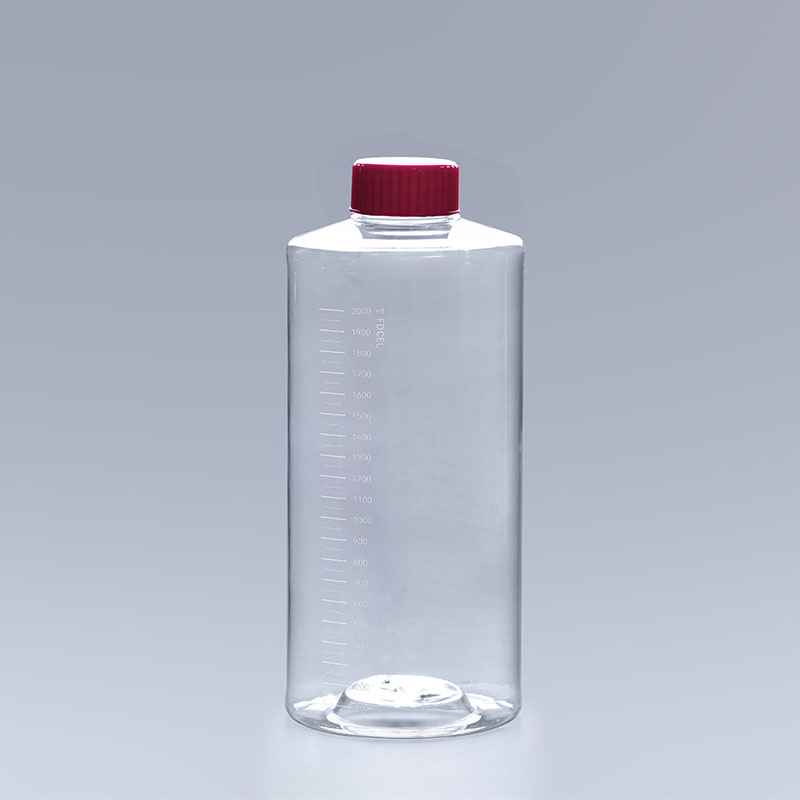Cell Roller Bottles, as an important culture vessel in biopharmaceutical and vaccine production, provides reliable support for industrialized production with its large-scale culture capability. However, in practice, various types of contamination problems often plague researchers, how to effectively prevent and control contamination has become the key to ensure the quality of culture.
Common contamination types and characteristics
In the process of Cell Roller Bottles culture, there are four types of typical contamination. Bacterial contamination is the most common, and the culture medium usually turns turbid and yellow within 24 hours, with black sandy bodies visible under the microscope, and cells die quickly. Mycobacterial contamination is more insidious, initially the culture medium stays clear, but after 2-3 days there will be flocculent impurities, and obvious mycelial structure can be seen under the microscope. Virus contamination is the most difficult to detect, no obvious changes in the culture medium and cell morphology, but may interfere with the accuracy of the experimental results. Mycoplasma contamination has no significant characteristics at the initial stage, and will lead to cell clumping, growth inhibition and other problems at a later stage.

Pollution source analysis and prevention and control measures
Pollution prevention and control during operation requires a systematic strategy. For the experimental environment, the incubator and ultra-clean table should be sterilized regularly to ensure that the air filtration system operates effectively. In terms of operation specification, strict aseptic operation procedures are required, including wearing protective equipment and standardizing disinfection steps. For the characteristics of Cell Roller Bottles, it is recommended to adopt a closed operating system to reduce the open operation link. Meanwhile, a standardized testing system is established, and mycoplasma testing and environmental microbiological monitoring are conducted regularly.
Contamination treatment and quality assurance
Once the contamination is found, the emergency treatment program needs to be activated immediately. The contaminated samples should be professionally inactivated and the related equipment should be thoroughly disinfected. Establish a backup system for the cell bank and conduct comprehensive quality testing before use, including sterility testing and mycoplasma testing. A disposable Cell Roller Bottles system is recommended to avoid the risk of cross-contamination. For key production links, implement process quality control to ensure traceability at each culture stage.
The advantages of large-scale culture of Cell Roller Bottles make it play an irreplaceable role in vaccine production, biopharmaceuticals and other fields, but contamination prevention and control is always the key to ensure the success of culture. By systematically analyzing the typical characteristics of bacteria, mold, virus and mycoplasma contamination, laboratories can establish a rapid identification mechanism so that timely intervention measures can be taken to improve cell culture results.
The FAI climbed 5.9 percent year-on-year in the first 11 months of 2018, quickening from the 5.7-percent growth in Jan-Oct, the National Bureau of Statistics (NBS) said Friday in an online statement.
The key indicator of investment, dubbed a major growth driver, hit the bottom in August and has since started to rebound steadily.
In the face of emerging economic challenges home and abroad, China has stepped up efforts to stabilize investment, in particular rolling out measures to motivate private investors and channel funds into infrastructure.
Friday's data showed private investment, accounting for more than 60 percent of the total FAI, expanded by a brisk 8.7 percent.
NBS spokesperson Mao Shengyong said funds into weak economic links registered rapid increases as investment in environmental protection and agriculture jumped 42 percent and 12.5 percent respectively, much faster than the average.
In breakdown, investment in high-tech and equipment manufacturing remained vigorous with 16.1-percent and 11.6-percent increases respectively in the first 11 months. Infrastructure investment gained 3.7 percent, staying flat. Investment in property development rose 9.7 percent, also unchanged.
 English
English


















































